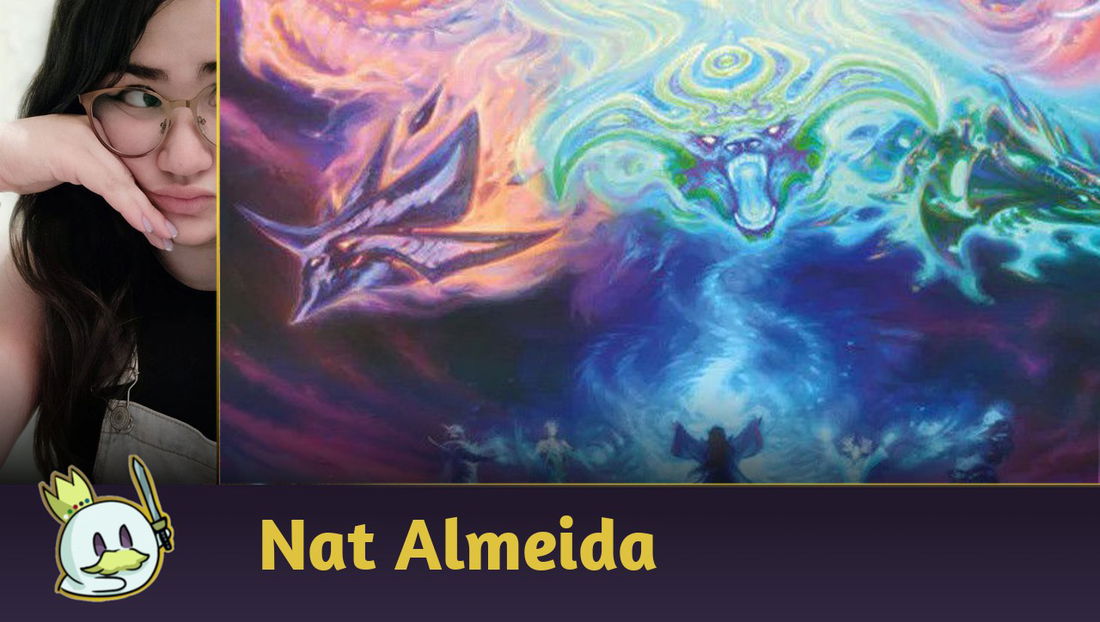Last Monday brought one of Pauper's most notable banning sprees. With the departure of Kuldotha Rebirth, Deadly Dispute and Basking Broodscale, the format lost three of the main pillars that defined the Metagame, and the unbanning of High Tide and Prophetic Prism also opens up new possibilities.
While some strategies, such as Affinity, should technically remain in the same spot they already have in the competitive scene, other decks either benefit or are greatly harmed by the interventions on March 31.
Ad
In this article, we look at the biggest winners and losers of the Pauper bans, and consider how they may shape the Metagame and what challenges they will face in the coming weeks.
The Wining Decks from the Pauper Bans
Gruul Ramp
Among the main decks in Pauper, Gruul Ramp was mainly the one that came out unscathed, and it even benefited from the changes made because it lost two bad matchups, while keeping its main core card, Writhing Chrysalis.
The expectation is that, in addition to the permanence of Affinity and perhaps Jund Wildfire, the new Metagame will be defined mainly by Blue-Based decks like Faeries, which Gruul is technically favored against today.
Other potential winners, like Boros Synthesizer and Ephemerate Tron are also relatively good matchups, even if it possibly forces some changes in the maindeck to better handle games against Tron.
Faeries
Not only did Faeries escape the bans unscathed, it also benefits from a slower Metagame where players may need setup turns, as it can cause early pressure and then initiate Tempo plays to delay the opponent's game.
Without the need for excessive mana efficiency, it's possible that Faeries will return to Dimir lists as the main variant to have a wider range of answers, especially against Writhing Chrysalis or Affinity creatures. Izzet versions should emerge if Blue-based decks grow too much in the Metagame, and Mono Blue could remain in the format by taking advantage of the newly unbanned High Tide, or if the best option to play against the format is to "go under".
Blue Terror
Like Faeries, the Tolarian Terror variants also didn't lose anything with the bans and even gained the benefit of not having to worry so much about non-interactive games to the point of focusing only on the Mono Blue versions — although this is possibly the archetype's home to deal with a Pauper that will be a few turns slower now.
The dispute between the Blue-Based decks will be one of the key points of the format in the coming weeks, as it will define which slots will be most important in the Sideboards alongside Pyroblast: effects like End the Festivities and Cast into the Fire, or removals like Extract a Confession and graveyard hate.
Boros Synthesizer
With the end of Kuldotha Red and Broodscale Combo, Boros Synthesizer and its variants automatically become one of the best proactive decks with Experimental Synthesizer in the format and no longer have a matchup where they were almost guaranteed to lose.
However, the path will not be easy: Gruul Ramp is an archetype that easily preys on Synthesizer and Tron was one of the decks blessed with the unban of Prophetic Prism and is also a terrible matchup for Boros — it remains to be seen whether its positive matchup against Faeries and potential to make efficient trades against Affinity will compensate for these bad matchups.
Ephemerate Tron
Ad
Without Kuldotha Rebirth + Goblin Bushwhacker to put an absurd amount of pressure on it and the return of its main tool for mana consistency, Tron can certainly return to competitive Pauper and be a relevant deck in the Metagame.
Like Boros Synthesizer, however, its path is not the easiest. Blue-Based decks are one of its main predators in the current Metagame and the archetypes that Tron tends to win against are in lower Tiers of the format, and even if Boros Synthesizer can grow, other Midrange decks in the format, such as Affinity and Jund Wildfire, have very efficient answers and/or a fast clock to the point of pressuring the opponent very early.
But Tron remains as one of the potential winners of the new format. After all, it's better to have the chance to exist and be a Tier 2 than to have no chance of doing well with any consistency in the Metagame.
The Losing Decks of the Pauper Bans
Broodscale Combo
This deck is dead. Next.
Mono Red
The Kuldotha Red as we know it ceased to exist with the ban of Kuldotha Rebirth, but unlike the Broodscale Combo, it is not safe to say that Red Aggro is dead in Pauper — there's still a very solid shell of creatures and artifacts that can create an archetype with broad synergy, such as Clockwork Percussionist, Experimental Synthesizer, Goblin Tomb Raider, Voldaren Epicure, and it's possible to add cards like Improvised Club and Goblin Blast-Runner for more interactions.
Its explosive potential, however, has been considerably reduced, and players will need to find new cards and ways to build Mono Red Aggro in Pauper, whether by going back to the origins of Burn, doing as some lists do and including Kessig Flamebreather and Thermo-Alchemist, or looking for interactions with Goblin Grenade in a deck more focused on that creature type.
Bogles
Bogles is an archetype that benefits greatly from Metagames that are not very interactive, or where players are too concerned with dealing with specific strategies and forget to focus on it. The pre-ban scenario was very favorable for it because it would naturally have a good matchup against Kuldotha Red while being able to beat the Broodscale combo in the “race”.
Now, with the slower format and a possible rise of Blue-Based, Bogles will have a hard time establishing itself as one of the best decks and should return to the position of one that gets results in unprepared environments, or if the Metagame becomes less interactive again.
Dredge
Like Bogles, Dredge preys on non-interactive Metagames, or those where graveyard hate is no longer prevalent in the Sideboards to make room for more popular archetypes.
With the reduced need for answers to Red Aggro or other combos, and the possibility of Tolarian Terror decks being one of the best decks in the current Metagame, it's likely that graveyard hate will become more important — coupled with the increased stack interaction with the rise of Blue-Based, it could be a tough time for Dredge.
Ad
Pactdoll Midrange
The various variants of Pactdoll Terror take a major hit with the loss of Deadly Dispute as it granted easy access to 
Unlike Affinity and perhaps even Jund Wildfire, Pactdoll decks are much more dependent on Treasure creation for their interactions, and cards like Fanatical Offering were already played in the maindeck anyway, removing potential viable replacements.
It's possible that the deck will survive, but it will also be necessary to evaluate whether it still does enough to make it worth playing with this variant instead of the more traditional Avenging Hunter shell — at first glance, it doesn't seem like it is.
Wrapping Up
That's all for today!
If you have any questions, feel free to leave a comment!
Thanks for reading!








— Comentarios0
Se el primero en comentar